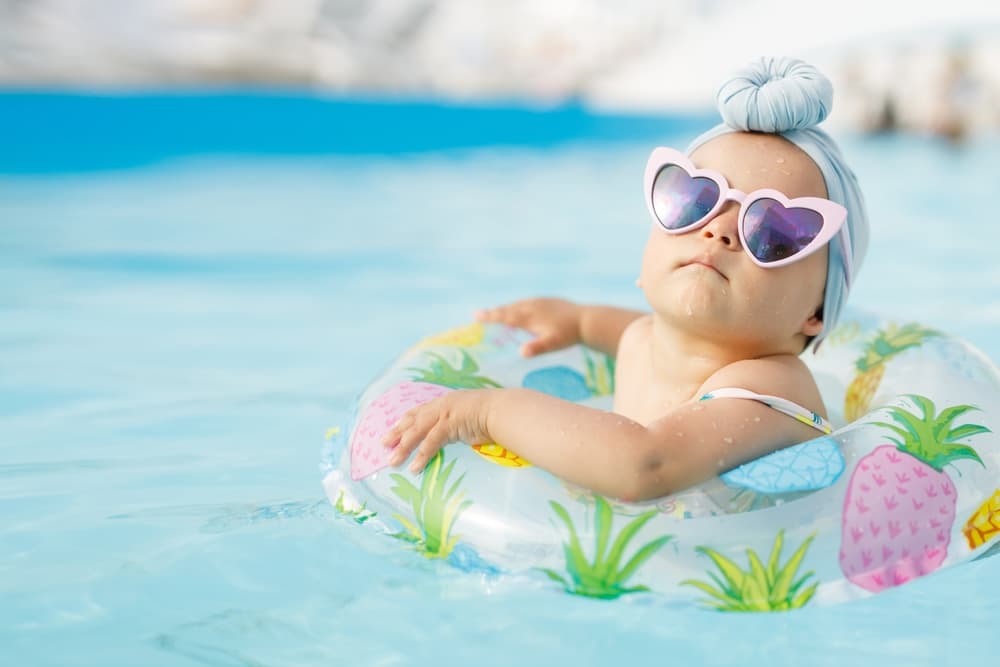
Swimming has many benefits for your little one, starting from increasing physical strength, coordination and stamina. Mothers can start teaching your little one to swim by inviting him to play on the edge of the pool and slowly getting him used to the water. For complete guidance, let's find out how to teach your little one to swim safely in the following article.
How to Teach Your Little One to Swim Safely
Training your little one to swim is certainly not an easy matter. Therefore, mothers need appropriate steps so as not to harm your little one. Come on, follow these tips to teach your little one to swim safely.
1. Pay attention to your little one's body condition
The main thing that must be considered before deciding to swim is your little one's body condition. Mothers must ensure that their little one is healthy and able to carry out activities. It's best to avoid activities that take up nap time, because it will actually have an impact on his body condition.
Make sure your little one doesn't swim when he's hungry. Fatigue or hunger can reduce your little one's energy and make him easily feel uncomfortable. Before going to the pool, also check your little one's body temperature to ensure that he does not have a fever or feel unwell. If your little one seems fussy or shows discomfort, it is better to postpone swimming.
2. Make sure the pool conditions are safe
Before taking your little one to swim, you must first ensure that the swimming pool conditions are safe and comfortable for him. Mothers should check the pool water temperature, which should ideally be between 30-32°C, because this temperature is considered the most ideal for your little one. Also make sure that the water depth in the pool is not too deep for your little one, ideally no more than one meter, so that swimming activities are safer.
Apart from that, mothers must also ensure that the pool is clean and free of harsh chemicals that can irritate your little one's skin or eyes. The best option is to use a swimming pool that is specifically designed for children so that your little one can learn to swim safely and comfortably.
3. Use Protection
Mothers, choose a comfortable swimsuit according to your little one's age so that he can move freely and enjoy his swimming time. Clothes that fit will help your little one feel comfortable and reduce the possibility of irritation. When swimming outdoors, don't forget to apply sunscreen that is suitable for your little one's sensitive skin. This will protect your little one's skin from the harmful effects of sunlight.
Apart from that, make sure your little one wears a float or swimming aid that is appropriate for his size and weight. This tool not only adds safety but also helps your little one feel more confident when in the water.
4. Start Slowly
Teaching your little one to swim must be gradual, Mother. The first step is to build your little one's courage and comfort with water. Before entering the pool, mothers can invite their little ones to play around on the edge of the pool. Use your little one's favorite toys to make this moment even more fun and reduce stress about the water.
Once your little one feels comfortable, you can hold your little one gently and slowly put him in the water. This process is important to get your little one used to the feeling of floating and the new environment. Let your little one adapt to the conditions in the water, before starting to teach him how to move or float in the pool.
Mother will help your little one not only learn to swim but also enjoy every moment in the water. This will make the swimming experience a fun activity that your little one looks forward to.
5. Limit time in the water
Your little one's skin is still very sensitive so they can't stay in the water for too long. Ideally, 10 minutes is enough time for your little one to swim, especially in the early stages of learning.
Pay attention to signs that your little one is starting to feel cold, such as blue lips or a shaking body. This is a signal that your little one needs to get out of the water immediately. Don't wait until your little one feels very uncomfortable. Once out of the water, immediately dry your little one's body with a warm towel and change your little one's clothes to dry clothes to prevent cold.
6. Observe your little one's skin reaction
If your little one experiences bumps or skin irritation, this could be a sign that the swimming pool may not be suitable for him. It could be due to the chemical content in the pool water or the water temperature is not suitable.
For the next step, try taking your little one to swim in a different pool, paying special attention to the water temperature which may be more suitable. Observe whether these changes provide better results for your little one's skin condition.
Konten Belum Tersedia
Mohon maaf, halaman untuk artikel Safe Ways to Teach Your Little One to Swim
belum tersedia untuk bahasa inggris. Apakah Bunda dan Ayah ingin melihat artikel lainnya dengan kategori yang sama ?